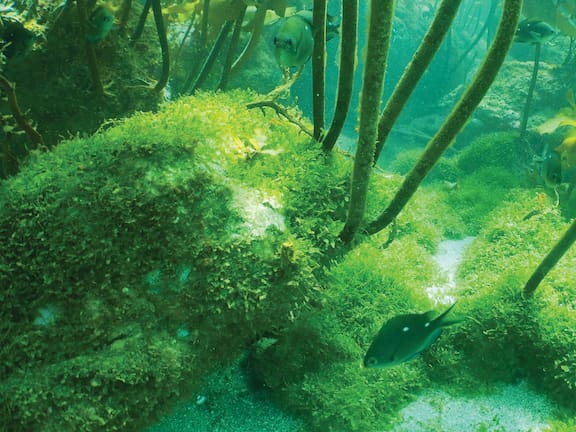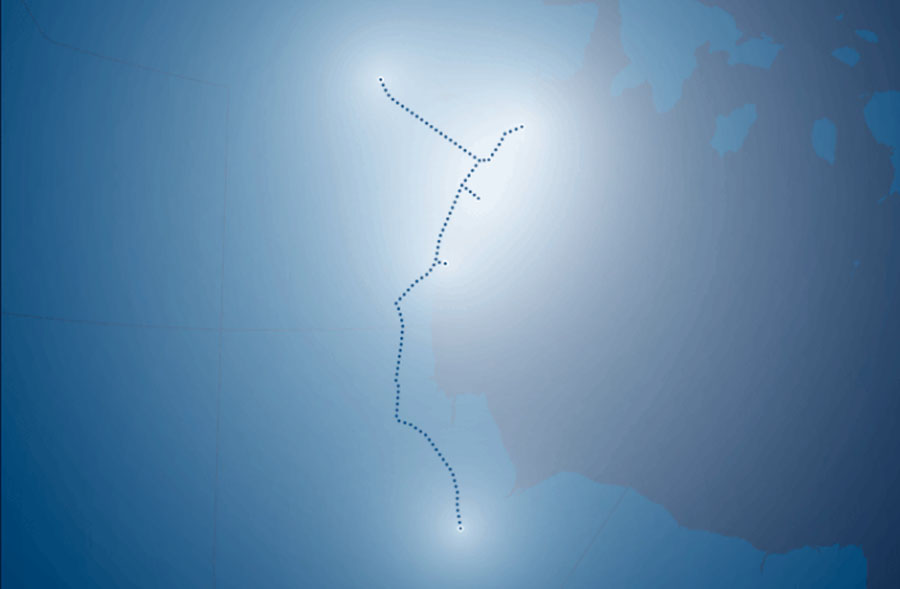The Devastating Impact Of Invasive Seaweed On Australia's Marine Fauna

Table of Contents
Invasive seaweed refers to non-native seaweed species that establish themselves in new environments, outcompeting native species for resources and disrupting the natural balance of the ecosystem. Several species pose significant threats to Australia's marine environments, including Caulerpa taxifolia (killer algae) and various species of Undaria pinnatifida (wakame). These invasive species pose a severe threat to the delicate balance of Australia's unique marine ecosystems.
Ecological Impacts of Invasive Seaweed
Habitat Destruction and Loss of Biodiversity
Invasive seaweeds aggressively outcompete native species for essential resources like sunlight, nutrients, and space. This leads to a significant decline in native flora and fauna. For example, the rapid growth of invasive seaweeds can smother native seagrasses, crucial habitats for numerous fish and invertebrate species.
- Native species affected: Many fish species reliant on seagrass beds for shelter and feeding, including juvenile snapper and bream, are directly impacted. Invertebrates like sea urchins and abalone also suffer habitat loss.
- Consequences:
- Reduced habitat complexity
- Decreased species richness
- Disruption of food webs
- Increased risk of native species extinction
Alteration of Marine Ecosystem Functioning
The dominance of invasive seaweeds significantly alters the functioning of marine ecosystems. This impacts several key processes:
- Water quality: Decomposition of large quantities of invasive seaweed can deplete oxygen levels, leading to hypoxic or anoxic conditions harmful to many marine organisms. Altered nutrient cycling can result in eutrophication, causing algal blooms and further disrupting the ecosystem.
- Consequences:
- Eutrophication
- Changes in sediment dynamics
- Increased susceptibility to disease
- Reduced overall ecosystem health
Economic Impacts of Invasive Seaweed
Impacts on Fisheries and Aquaculture
The proliferation of invasive seaweed has significant economic consequences for Australia's fishing and aquaculture industries.
- Consequences:
- Reduced fish catches due to habitat loss and reduced prey availability.
- Damage to aquaculture infrastructure, such as oyster farms, from smothering by invasive seaweed.
- Increased costs associated with seaweed removal and mitigation efforts.
Impacts on Tourism and Recreation
The presence of large quantities of invasive seaweed negatively impacts coastal tourism and recreation.
- Consequences:
- Reduced attractiveness of beaches and coastal areas, deterring tourists.
- Damage to boats and water sports equipment.
- Closure of popular swimming and recreational areas, leading to significant economic losses for businesses reliant on tourism.
Management and Control Strategies for Invasive Seaweed
Current Approaches to Control and Eradication
Several methods are employed to manage and control invasive seaweeds, each with its own limitations:
- Manual removal: Effective for small-scale infestations but impractical for large areas.
- Chemical control: Can be effective but poses risks to non-target species and the environment.
- Biological control: Involves introducing natural enemies of the invasive seaweed, but requires careful research to ensure no unintended consequences.
Future Research and Management Priorities
Addressing the invasive seaweed problem requires a multi-pronged approach that includes:
- Further research: Improved understanding of the biology and ecology of invasive seaweed species is crucial for developing effective management strategies.
- Early detection and rapid response: Implementing robust monitoring programs to detect new invasions early is vital.
- Integrated management strategies: Combining multiple control methods tailored to specific locations and species is likely to be the most effective approach.
- Prevention: Strict biosecurity measures are necessary to prevent the introduction of new invasive species.
Conclusion: Addressing the Devastating Impact of Invasive Seaweed on Australia's Marine Fauna
Invasive seaweed poses a significant threat to Australia's marine ecosystems and economies. The ecological consequences, including habitat destruction and biodiversity loss, are severe. The economic impacts on fisheries, aquaculture, and tourism are equally concerning. Effective management requires a combination of current control methods and further research into innovative solutions, along with strong biosecurity measures to prevent future invasions. Learn more about the devastating effects of invasive seaweed and get involved in protecting Australia's precious marine ecosystems. Together, we can combat the spread of invasive seaweed and safeguard our marine biodiversity.

Featured Posts
-
 The Unexpected Career Turn Of Jacob Alon A Surprising Story
May 30, 2025
The Unexpected Career Turn Of Jacob Alon A Surprising Story
May 30, 2025 -
 Manitoba Nunavut Partnership Kivalliq Hydro Fibre Link Creates Strategic Corridor
May 30, 2025
Manitoba Nunavut Partnership Kivalliq Hydro Fibre Link Creates Strategic Corridor
May 30, 2025 -
 Argentine Youth And Free Markets The Milei Tuttle Twins Educational Program
May 30, 2025
Argentine Youth And Free Markets The Milei Tuttle Twins Educational Program
May 30, 2025 -
 Programma Tileorasis Savvatoy 3 5 Odigos Metadoseon
May 30, 2025
Programma Tileorasis Savvatoy 3 5 Odigos Metadoseon
May 30, 2025 -
 Nvidia Ceo Jensen Huangs Warning Chinas Ai Rivals Are Formidable
May 30, 2025
Nvidia Ceo Jensen Huangs Warning Chinas Ai Rivals Are Formidable
May 30, 2025
